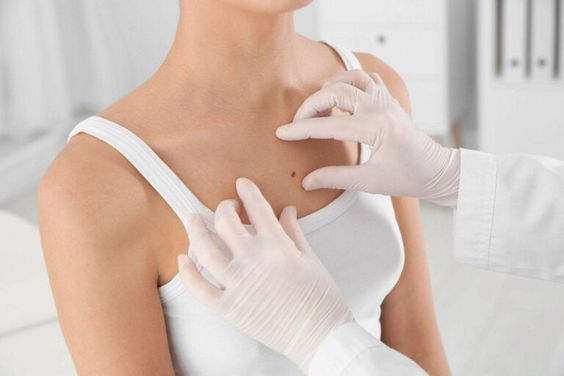Mole removal is a common cosmetic procedure that many individuals in Dubai consider to enhance their appearance and boost their confidence. However, after the procedure, proper aftercare is crucial to ensure optimal healing and minimize complications. One of the most important aspects of aftercare is protecting the skin from sun exposure. This article explores when it’s safe to sunbathe after Mole Removal in Dubai, the reasons for sun protection, and tips for effective sun care during the healing process.
Understanding Mole Removal Procedures:
Before discussing sunbathing timelines, it’s essential to understand the different methods of mole removal, as each may have different healing requirements:
Surgical Excision:
This method involves cutting out the mole and a small margin of surrounding skin. It’s often used for larger or suspicious moles.
Laser Removal:
This technique uses focused light to break down the pigment in the mole. It is generally suitable for smaller, benign moles.
Cryotherapy:
This involves freezing the mole with liquid nitrogen, making it effective for superficial moles.
Each of these methods has unique healing times and aftercare requirements, especially concerning sun exposure.
The Importance of Sun Protection:
After mole removal, the skin is particularly sensitive and vulnerable to damage. Here are several reasons why protecting the area from sun exposure is crucial:
Increased Sensitivity:
The skin around the removal site may be inflamed or sensitive. Sun exposure can exacerbate discomfort and lead to complications.
Risk of Hyperpigmentation:
UV rays can cause hyperpigmentation, leading to dark spots on the skin. This is especially concerning for newly healed skin, which may react more dramatically to sunlight.
Scarring:
Exposure to sunlight can worsen the appearance of scars. Keeping the area protected can help minimize scarring and promote a more even skin tone.
Healing Process:
The skin needs time to heal properly. Sun exposure can interfere with the healing process, increasing the risk of infection and complications.
When Can You Sunbathe?
1. Immediate Aftercare (First 1-2 Weeks)
For the first week or two following mole removal, it is crucial to avoid sun exposure entirely. This period is when the skin is most vulnerable. During this time:
Keep the Area Covered: Use a bandage or clothing to cover the removal site when outdoors.
Avoid Direct Sunlight: Stay in the shade whenever possible and avoid outdoor activities during peak sun hours (10 AM to 4 PM).
2. After Two Weeks
After the initial healing period (approximately 1-2 weeks), you may begin to gradually reintroduce sun exposure, but with caution:
Use Sunscreen:
Apply a broad-spectrum sunscreen with an SPF of at least 30 to the area before going outside. Reapply every two hours, especially if sweating or swimming.
Limit Exposure: Start with short periods of sun exposure, gradually increasing as the skin continues to heal. Monitor how your skin reacts.
3. Four to Six Weeks Post-Procedure
By four to six weeks after mole removal, most patients will notice significant healing. However, it’s still advisable to take precautions:
Continue Using Sunscreen: Maintain the habit of applying sunscreen daily, even on cloudy days, as UV rays can penetrate through clouds.
Avoid Tanning Beds: Stay away from tanning beds and other artificial sources of UV light, as they can be just as harmful as natural sunlight.
4. Three Months and Beyond
After three months, if your skin has healed well and there are no complications, you may resume more normal sun exposure:
Reassess Your Skin:
If you notice any changes or concerns, consult your dermatologist before increasing sun exposure.
Maintain Good Sun Habits: Continue using sunscreen and protective clothing to safeguard your skin from UV damage.
Tips for Safe Sun Exposure
Choose the Right Sunscreen: Opt for a broad-spectrum sunscreen that protects against both UVA and UVB rays. Look for water-resistant formulas if you plan to swim or sweat.
Wear Protective Clothing:
In addition to sunscreen, consider wearing wide-brimmed hats and UV-protective clothing when spending extended time outdoors.
Stay Hydrated:
Keeping your skin hydrated can aid in the healing process. Drink plenty of water and use moisturizers as recommended by your dermatologist.
Monitor Your Skin:
Keep an eye on the removal site for any changes in color, texture, or signs of infection. If you notice anything unusual, contact your healthcare provider.
Consult Your Dermatologist:
Always follow the specific advice of your dermatologist regarding sun exposure and aftercare, as they will tailor their recommendations based on your individual situation.
Conclusion!
Mole removal can be a life-changing procedure, enhancing your appearance and boosting your confidence. However, it’s essential to prioritize sun protection during the healing process to ensure optimal recovery and minimize complications. Avoid sunbathing for at least the first two weeks, gradually reintroducing sun exposure while using sunscreen and protective measures. By following these guidelines, you can enjoy the benefits of your procedure while safeguarding your skin’s health. If you have any concerns or questions about your healing process, don’t hesitate to consult your dermatologist for personalized advice.






Comments